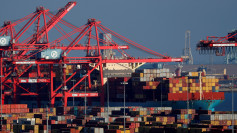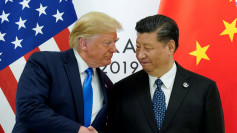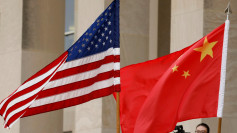China's export sector continued to show resilience in May, providing a much-needed boost to the world's second-largest economy amid ongoing challenges in domestic demand. According to customs data released on Friday, outbound shipments grew by 7.6% year-on-year, surpassing economists' forecasts of 6% and significantly higher than the 1.5% increase seen in April. This marks the second consecutive month of solid export performance, suggesting that Chinese factories are successfully finding buyers overseas despite global economic uncertainties.
Frederic Neumann, chief Asia economist at HSBC, highlighted the strength of China's export machinery, stating, "China is currently so competitive, that even trade restrictions wouldn't really slow the export juggernaut that's underway." However, he also cautioned that the sustainability of this growth is contingent on stable demand from key markets such as the United States. "If U.S. demand buckles, then the global trade cycle is quickly going to fizzle," Neumann added, emphasizing the need for China to stimulate its domestic economy to ensure long-term stability.
While the export figures provided a glimmer of hope, China's import growth was more subdued, increasing by just 1.8% in May compared to an 8.4% rise in April. This disparity underscores the fragility of domestic consumption, which has been hampered by a protracted property sector crisis and low consumer confidence.
"Headline export numbers are surprisingly good, and that confirms the underlying trend, volumes are running very high," Neumann noted. Despite this, the sluggish import growth highlights persistent weaknesses within China's domestic economy. The country's imports of commodities presented a mixed picture, with declines in crude oil and soybeans, while copper and iron ore saw increases.
The property sector remains a significant drag on economic performance. With low investor and consumer confidence, the crisis has undermined business activity and dampened domestic consumption. Analysts anticipate further policy measures to support the economy, with expectations for increased fiscal stimulus to boost domestic demand. The International Monetary Fund (IMF) recently upgraded its growth forecast for China to align with Beijing's target of around 5% for 2024, but it also warned of risks stemming from the ongoing property sector troubles.
China's trade data for May also showed a notable increase in high-tech exports, suggesting a global upturn in the electronics sector. Integrated circuits, a critical component of modern technology, saw a 28.4% year-on-year increase in export value, reflecting robust demand. This aligns with similar trends observed in South Korea, a key indicator of China's performance in the technology sector.
Despite these positive signals, China's trade relations with the West remain strained. Recent reports indicate that U.S. lawmakers are pushing to ban Chinese battery firms with ties to Ford and Volkswagen from exporting to the U.S. Additionally, the Biden administration has increased tariffs on $18 billion worth of Chinese exports, including a significant hike on tariffs for new energy vehicles. These measures highlight ongoing trade tensions and the potential challenges they pose to China's export-driven growth.
China's trade surplus grew to $82.62 billion in May, up from $72.35 billion in April, a figure that has often been a point of contention in trade discussions with the U.S. Zichun Huang, China economist at Capital Economics, suggested that exports are likely to remain strong in the near term, supported by a weaker real effective exchange rate. "Foreign tariffs are unlikely to immediately threaten exports," Huang said, noting that firms might expedite shipments to circumvent impending duties.
The broader economic picture remains complex. While the export sector is performing well, the domestic economy shows signs of strain. The disparity between robust exports and weak imports reflects deeper structural issues that Chinese policymakers must address to ensure sustainable growth. As China navigates these challenges, the focus will remain on balancing external and internal economic forces to maintain stability and growth.






